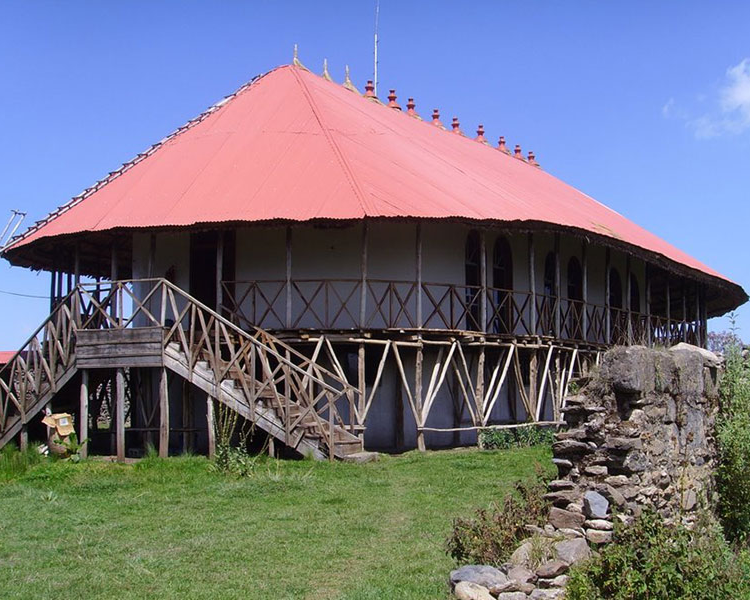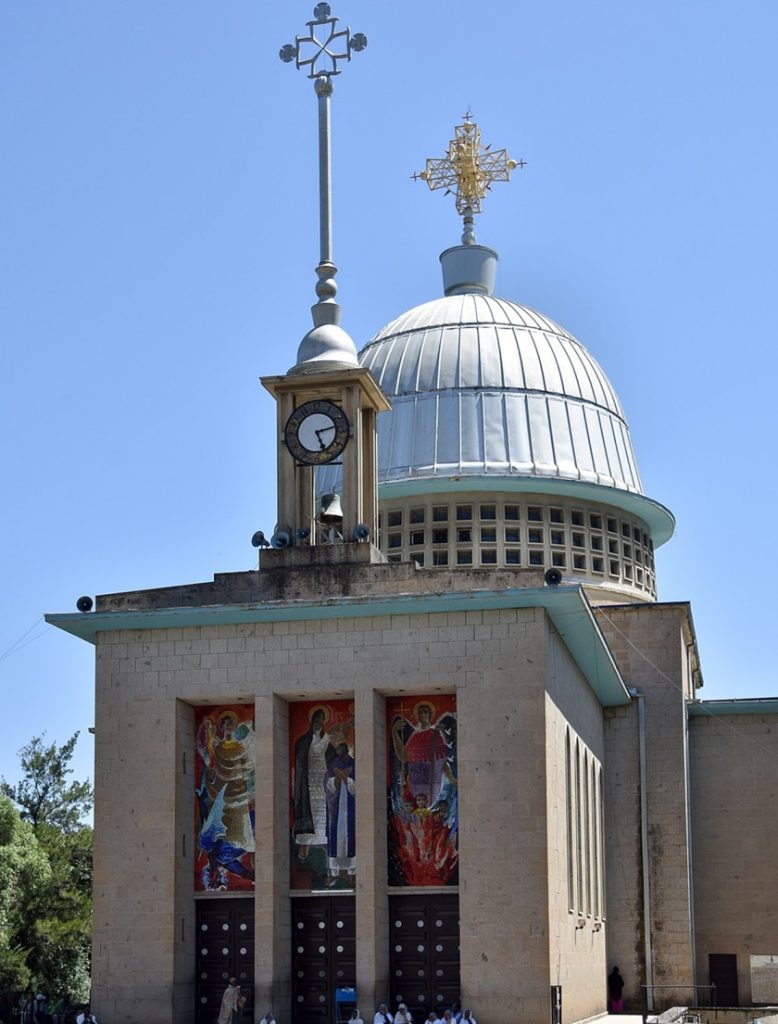
Debre Libanos Monastery, located 110 kilometers northwest of Addis Ababa, is one of Ethiopia’s most important religious and historical landmarks. Founded in the 13th century by Saint Tekle Haymanot—who is believed to have meditated in a nearby cave for 29 years—the monastery became a powerful center of the Ethiopian Orthodox Church.
Renamed Debre Libanos in the 15th century, it served as the seat of the Ichege, the second-highest position in the church hierarchy. The site has endured significant tragedies, including its destruction by Ahmed Gragn in the 16th century and the 1937 massacre by Italian forces under General Graziani, where thousands of monks and pilgrims were killed.
The present-day church was rebuilt by Emperor Haile Selassie in the 1960s and is known for its stained-glass windows and vibrant mosaics. Nearby is the Portuguese Bridge, a 19th-century stone bridge often misattributed to the Portuguese.
And it have best Panoramic view of jema gorge
Menagesha Suba is Africa’s oldest protected forest, established in the 15th century by Emperor Zera Yacob. Just 35 km west of Addis Ababa, the park is rich in biodiversity and home to endemic wildlife such as Menelik’s bushbuck, Columbus monkeys, and a variety of birds. The forest is also known for scenic hiking trails that lead to Mount Damocha (3,380 m), offering views over the capital.
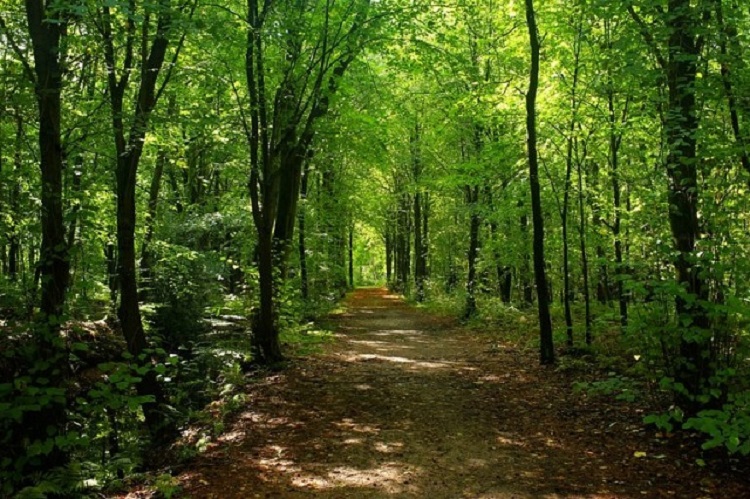
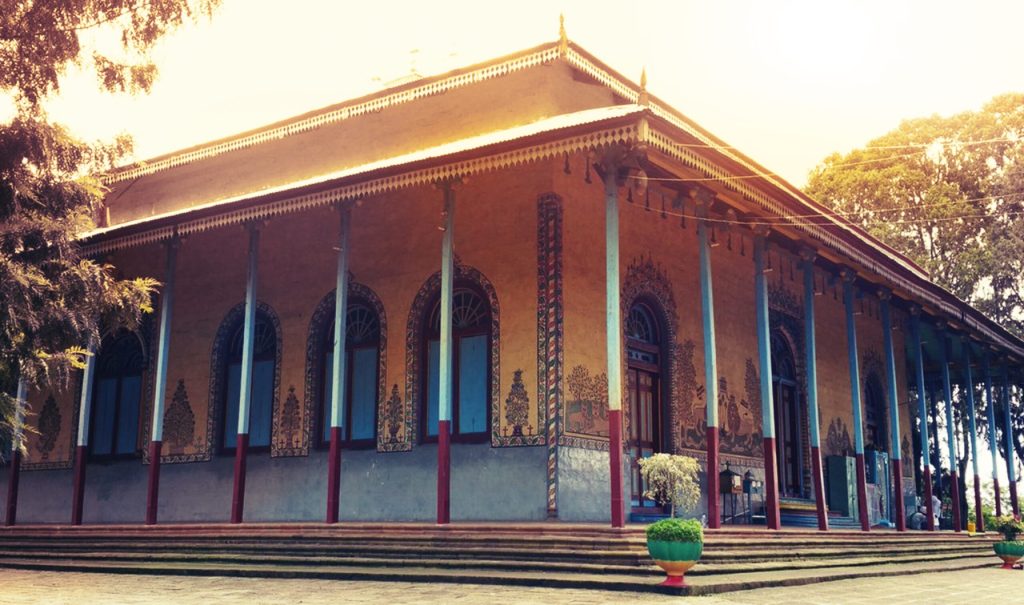
Located near the town of Addis Alem (formerly known as Addis Alem Mariyam), this church was initially intended by Emperor Menelik II to be the new capital before he changed plans. The church, built in traditional Ethiopian Orthodox style, is surrounded by tall trees and is a peaceful religious site that reflects imperial and ecclesiastical history.
Wenchi is a stunning volcanic crater lake located about 155 km west of Addis Ababa. Surrounded by forested mountains and green valleys, the lake contains hot springs, waterfalls, and a monastery on an island. Visitors can enjoy hiking, horse riding, and boat trips across the lake. The area is also inhabited by Oromo farmers, offering a glimpse of rural life and traditional hospitality.
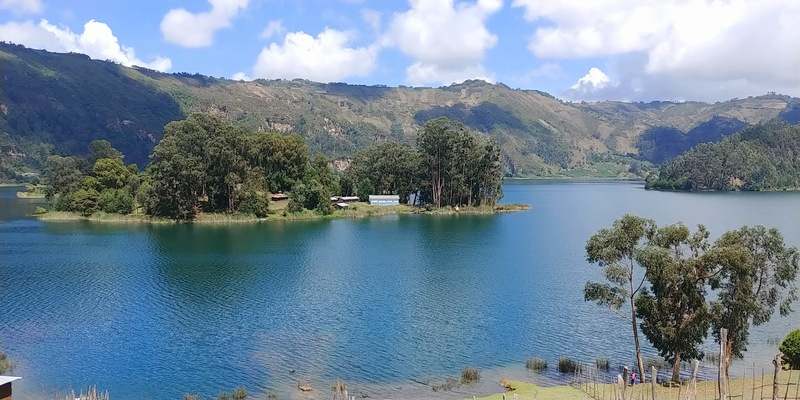
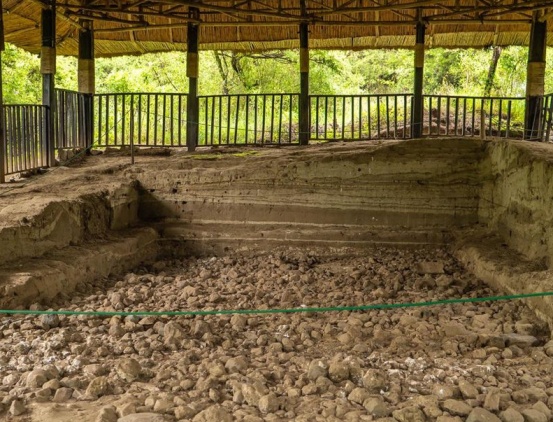
Melka Kunture, located near the Awash River about 50 kilometers southwest of Addis Ababa, is one of Ethiopia’s most important archaeological sites. It holds evidence of early human life dating back nearly two million years.
Since the 1960s, excavations have uncovered stone tools and fossils linked to early humans like Homo erectus and Homo sapiens. These discoveries show the development of tool-making skills and how early humans adapted to their environment.
The site also contains signs of early food processing, offering insight into prehistoric human behavior. Recent studies using advanced dating and environmental analysis continue to reveal how early humans lived and evolved in the region.
Melka Kunture remains a vital site for understanding human origins and the prehistoric past of Ethiopia.
Adadi Maryam is a rock-hewn church located about 66 km south of Addis Ababa, near the town of Adadi. It is the southernmost rock-cut church in Ethiopia and is believed to have been carved in the 12th or 13th century.
Tradition links its construction to King Lalibela during his missionary travels. The church is carved from a single rock and features architectural elements similar to the churches in Lalibela, including arches and a central sanctuary.
Adadi Maryam remains an active worship site and attracts pilgrims, especially on Saint Mary’s feast days. It is an important symbol of Ethiopia’s ancient Christian heritage and architectural tradition.
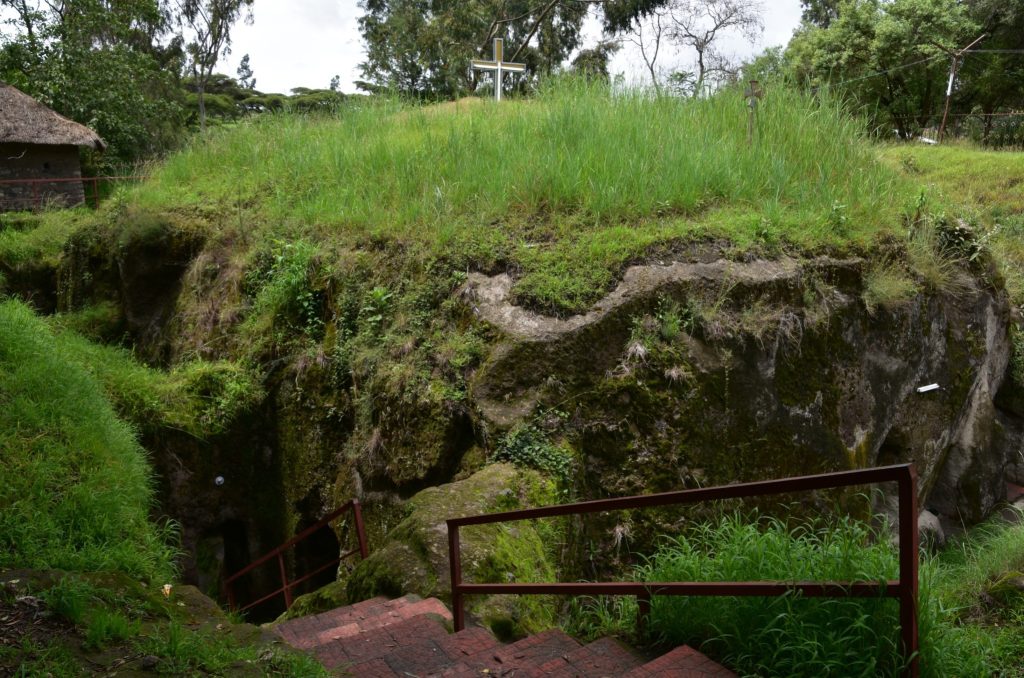
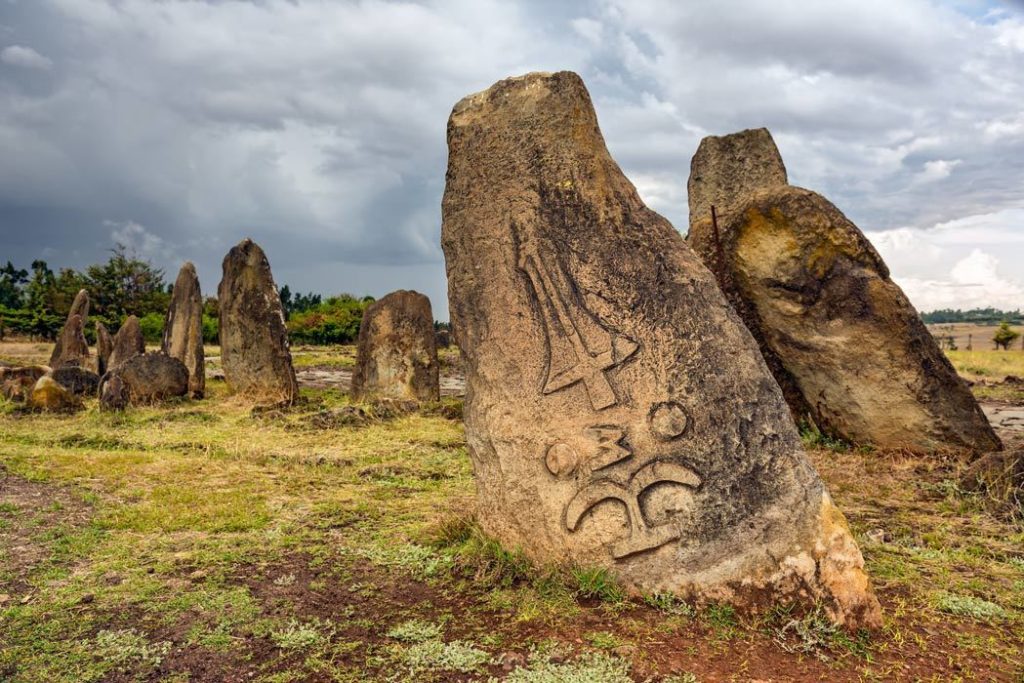
Tiya, located about 80 km south of Addis Ababa in Ethiopia’s Gurage Zone, is an important archaeological site known for its unique megalithic grave markers. Designated a UNESCO World Heritage Site in 1980, it features over 30 engraved stelae dating between the 10th and 15th centuries CE.
These upright stones mark burial sites and are carved with symbols such as swords, daggers, plant motifs, and geometric shapes. Some stones are anthropomorphic, while others are phallic or flat. The presence of weapons suggests they commemorate important individuals, possibly warriors.
The Tiya stelae are part of a wider megalithic tradition in southern Ethiopia and reflect the spiritual and social practices of a lost society. Tiya, along with nearby sites like Melka Kunture and Adadi Maryam Church, offers insight into Ethiopia’s ancient past and cultural diversity.
Located in Ethiopia’s central highlands, Debre Birhan and Ankober are historic towns rich in culture and natural beauty. Debre Birhan, founded in 1456 by Emperor Zara Yaqob and sitting at 2,840 meters, was a former capital and today serves as an administrative and educational center. It is known for the Debre Birhan Selassie Church and a vibrant local market.
Just 42 kilometers east, Ankober, once the Kingdom of Shewa’s capital and Menelik II’s seat, rests at 2,465 meters overlooking the Rift Valley. It holds ruins of royal palaces and historic churches. Ankober is also famous for its unique bird species and lush highland forests.
Together, these towns offer a compelling mix of Ethiopia’s royal history, cultural heritage, and scenic landscapes, making them ideal destinations for history enthusiasts and nature lovers alike.
